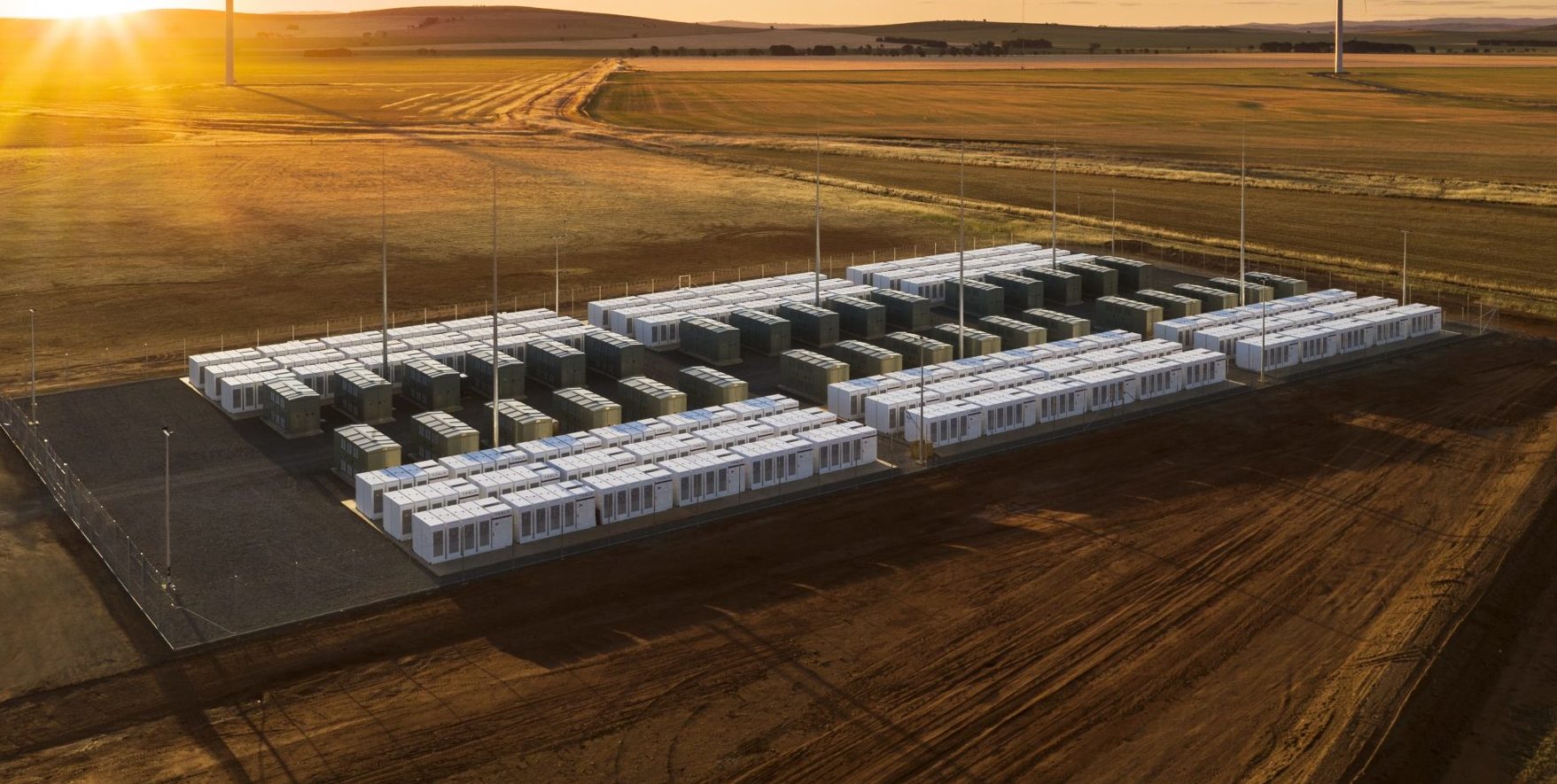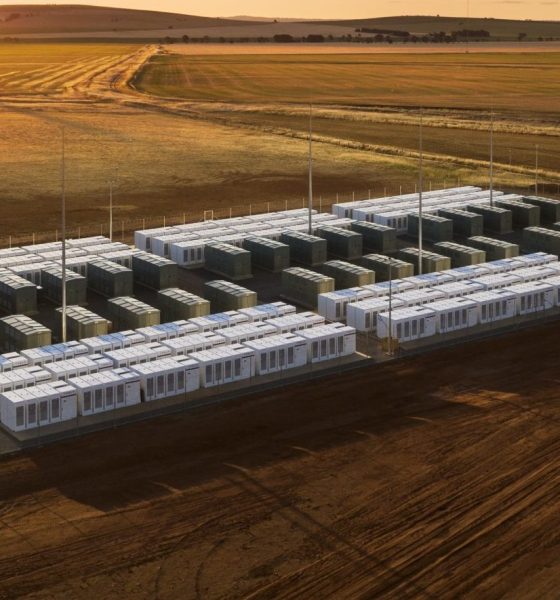

Energy
Tesla pushes battery improvements amid renewable energy’s attack on coal
In the spirit of constant innovation, Tesla’s batteries and energy storage products continue to see improvements over time. From improving energy density to more efficiencies in manufacturing, Tesla’s energy products are evolving just as fast as the company’s electric cars. Such improvements were teased by Tesla President of Automotive Jerome Guillen. In a recent interview with CNBC, Guillen remarked that the company’s batteries are always dynamic, and are in a constant process of improvement.
“We are improving the design of the cell. The design of the cell is not frozen. It evolves, and we have a nice roadmap of technology improvements for the coming years,” Guillen said.
Tesla’s upcoming ramp of its energy products is coming at the perfect time. Amidst Tesla’s push to increase the production of its energy products, as well as the company’s efforts to achieve $100 per kWh in battery cell costs, the renewable energy market itself is also making huge strides.
The results of a recent analysis from research firm Lazard has revealed that wind and solar energy costs in the United States have finally reached a point where they are becoming more and more competitive with traditional power sources, such as those derived from coal. And that’s without tax subsidies. With subsidies in the picture, the cost advantages of renewable energy over coal are even more notable.
Lazard’s levelized cost of energy (LCOE) analysis concluded that US onshore wind energy costs now average between $26/MWh and $56/MWh without subsidies. Solar energy, on the other hand, averages around $36/MWh and $44/MWh with no subsidies involved. In comparison, the average cost of US existing coal plants is between $27/MWh and $45/MWh.
With such competitive costs, renewable energy is currently challenging coal generation. And the movement is spreading — in the Upper Midwest, Xcel Energy’s utilities have revealed plans to retire about 50% of their coal-fired capacity in the coming years. To replace these facilities, Xcel is looking to wind energy. In a statement to Utility Drive, Xcel CEO Ben Fowke stated that the lowering price of sustainable energy is a large factor for the company’s push towards wind power.
“We’re looking at [wind energy prices] in the low teens to low 20s [in dollars/MWh] — not starting prices, but levelized across the 25-year life of the project. That beats gas, even at today’s prices,” he said.
Considering that wind and solar power are not ever-present, though, the key to a shift to sustainability lies in solutions such as industry-grade battery storage systems, which are capable of storing and distributing energy. This is where Tesla Energy comes in. In a statement to the San Francisco Chronicle back in September, Tesla CTO JB Straubel noted that grid-scale battery solutions such as Tesla’s Powerpacks, which are easily scaled and are reliable, are starting to become an ideal alternative to fossil fuel-powered solutions.
“I think what we’ll see is we won’t build many new peaker plants, if any. Already what we’re seeing happening is the number of new ones being commissioned is drastically lower, and batteries are already outcompeting natural gas peaker plants,” Straubel said.
Such changes are becoming more notable in the United States. Just recently, the state of California announced that it had approved PG&E’s proposal to build a record-breaking 2.2 GWh battery storage project to replace three gas-powered plants. In South Dakota, BP plc has also installed a Tesla battery storage system in at one of its wind energy farms. While BP’s 212 KW/840 kWh battery storage system is not as large-scale as the recently announced CA project, the company has noted that the installation could be expanded in the future.
Wood Mackenzie, a research firm, estimates that the world’s shift from fossil fuels to renewables could happen as early as 2035. At this time, the company expects electric cars, wind power, and solar power to be more prevalent than gasoline and diesel-powered vehicles, as well as fossil fuel-based electricity. Wood Mackenzie notes that the shift towards renewables will hit a tipping point when EVs and clean energy solutions achieve a 20% market share. With this in mind, Tesla’s ramp of its energy business could not come faster.

Cybertruck
Tesla updates Cybertruck owners about key Powershare feature

Tesla is updating Cybertruck owners on its timeline of a massive feature that has yet to ship: Powershare with Powerwall.
Powershare is a bidirectional charging feature exclusive to Cybertruck, which allows the vehicle’s battery to act as a portable power source for homes, appliances, tools, other EVs, and more. It was announced in late 2023 as part of Tesla’s push into vehicle-to-everything energy sharing, and acting as a giant portable charger is the main advantage, as it can provide backup power during outages.
Cybertruck’s Powershare system supports both vehicle-to-load (V2L) and vehicle-to-home (V2H), making it flexible and well-rounded for a variety of applications.
However, even though the feature was promised with Cybertruck, it has yet to be shipped to vehicles. Tesla communicated with owners through email recently regarding Powershare with Powerwall, which essentially has the pickup act as an extended battery.
Powerwall discharge would be prioritized before tapping into the truck’s larger pack.
However, Tesla is still working on getting the feature out to owners, an email said:
“We’re writing to let you know that the Powershare with Powerwall feature is still in development and is now scheduled for release in mid-2026.
This new release date gives us additional time to design and test this feature, ensuring its ability to communicate and optimize energy sharing between your vehicle and many configurations and generations of Powerwall. We are also using this time to develop additional Powershare features that will help us continue to accelerate the world’s transition to sustainable energy.”
Owners have expressed some real disappointment in Tesla’s continuous delays in releasing the feature, as it was expected to be released by late 2024, but now has been pushed back several times to mid-2026, according to the email.
Foundation Series Cybertruck buyers paid extra, expecting the feature to be rolled out with their vehicle upon pickup.
Cybertruck’s Lead Engineer, Wes Morrill, even commented on the holdup:
As a Cybertruck owner who also has Powerwall, I empathize with the disappointed comments.
To their credit, the team has delivered powershare functionality to Cybertruck customers who otherwise have no backup with development of the powershare gateway. As well as those with solar…
— Wes (@wmorrill3) December 12, 2025
He said that “it turned out to be much harder than anticipated to make powershare work seamlessly with existing Powerwalls through existing wall connectors. Two grid-forming devices need to negotiate who will form and who will follow, depending on the state of charge of each, and they need to do this without a network and through multiple generations of hardware, and test and validate this process through rigorous certifications to ensure grid safety.”
It’s nice to see the transparency, but it is justified for some Cybertruck owners to feel like they’ve been bait-and-switched.
Energy
Tesla starts hiring efforts for Texas Megafactory
Tesla’s Brookshire site is expected to produce 10,000 Megapacks annually, equal to 40 gigawatt hours of energy storage.

Tesla has officially begun hiring for its new $200 million Megafactory in Brookshire, Texas, a manufacturing hub expected to employ 1,500 people by 2028. The facility, which will build Tesla’s grid-scale Megapack batteries, is part of the company’s growing energy storage footprint.
Tesla’s hiring efforts for the Texas Megafactory are hinted at by the job openings currently active on the company’s Careers website.
Tesla’s Texas Megafactory
Tesla’s Brookshire site is expected to produce 10,000 Megapacks annually, equal to 40 gigawatt hours of energy storage, similar to the Lathrop Megafactory in California. Tesla’s Careers website currently lists over 30 job openings for the site, from engineers, welders, and project managers. Each of the openings is listed for Brookshire, Texas.
The company has leased two buildings in Empire West Business Park, with over $194 million in combined property and equipment investment. Tesla’s agreement with Waller County includes a 60% property tax abatement, contingent on meeting employment benchmarks: 375 jobs by 2026, 750 by 2027, and 1,500 by 2028, as noted in a report from the Houston Business Journal. Tesla is required to employ at least 1,500 workers in the facility through the rest of the 10-year abatement period.
Tesla’s clean energy boom
City officials have stated that Tesla’s arrival marks a turning point for the Texas city, as it highlights a shift from logistics to advanced clean energy manufacturing. Ramiro Bautista from Brookshire’s economic development office, highlighted this in a comment to the Journal.
“(Tesla) has great-paying jobs. Not just that, but the advanced manufacturing (and) clean energy is coming to the area,” he said. “So it’s not just your normal logistics manufacturing. This is advanced manufacturing coming to this area, and this brings a different type of job and investment into the local economy.”
Energy
Tesla and Samsung SDI in talks over new US battery storage deal: report
The update was related by industry sources and initially reported by South Korean news outlets.

Recent reports have suggested that Tesla and Samsung SDI are in talks over a potential partnership to supply batteries for large-scale energy storage systems (ESS).
The update was related by industry sources and initially reported by South Korean news outlets.
ESS batteries to be built at Samsung’s Indiana plant
As noted in a report from Korea JoongAng Daily, the demand for energy storage systems has been growing rapidly in North America, thanks in no small part to the surge in AI investments across numerous companies. With this in mind, Tesla has reportedly approached Samsung SDI about a potential battery supply deal.
The deal is reportedly worth over 3 trillion Korean won (approximately $2.11 billion) and will span three years, according to The Korea Global Economic Daily. A battery supply deal with Samsung SDI could make sense for Tesla as the company already has a grid-scale battery, the Megapack, which is perfect for industrial use. Samsung SDI could simply supply cells for the EV maker.
Production of the batteries would reportedly take place at Samsung SDI’s joint venture factory with Stellantis in Indiana, which is currently under construction. Samsung SDI recently announced plans to use part of that plant’s EV lines to produce cells for ESS, with a targeted capacity of 30 GWh by the end of next year.
Tesla and Samsung’s partnership
At present, only a handful of manufacturers, including Korea’s LG Energy Solution, Samsung SDI, SK On, and Japan’s Panasonic, are capable of producing energy storage-scale batteries domestically in the United States. A Samsung SDI official issued a comment about the matter, stating, “Nothing has been finalized regarding cooperation with Tesla.”
The possible energy storage system deal adds another layer to Tesla’s growing collaboration with Samsung, which is already in line as a partner in the upcoming production of Tesla’s AI5 and AI6 chips. Early sample manufacturing of the AI6 is expected to begin in South Korea, with mass production slated for Samsung’s Texas-based Taylor foundry when it starts operations.
The AI6 chip will power Tesla’s next wave of high-volume projects, including the Optimus humanoid robot and the autonomous Cybercab service. Musk has called the partnership with Samsung a “real collaboration,” adding that he personally plans to “walk the line” at the Taylor facility to speed up progress.








